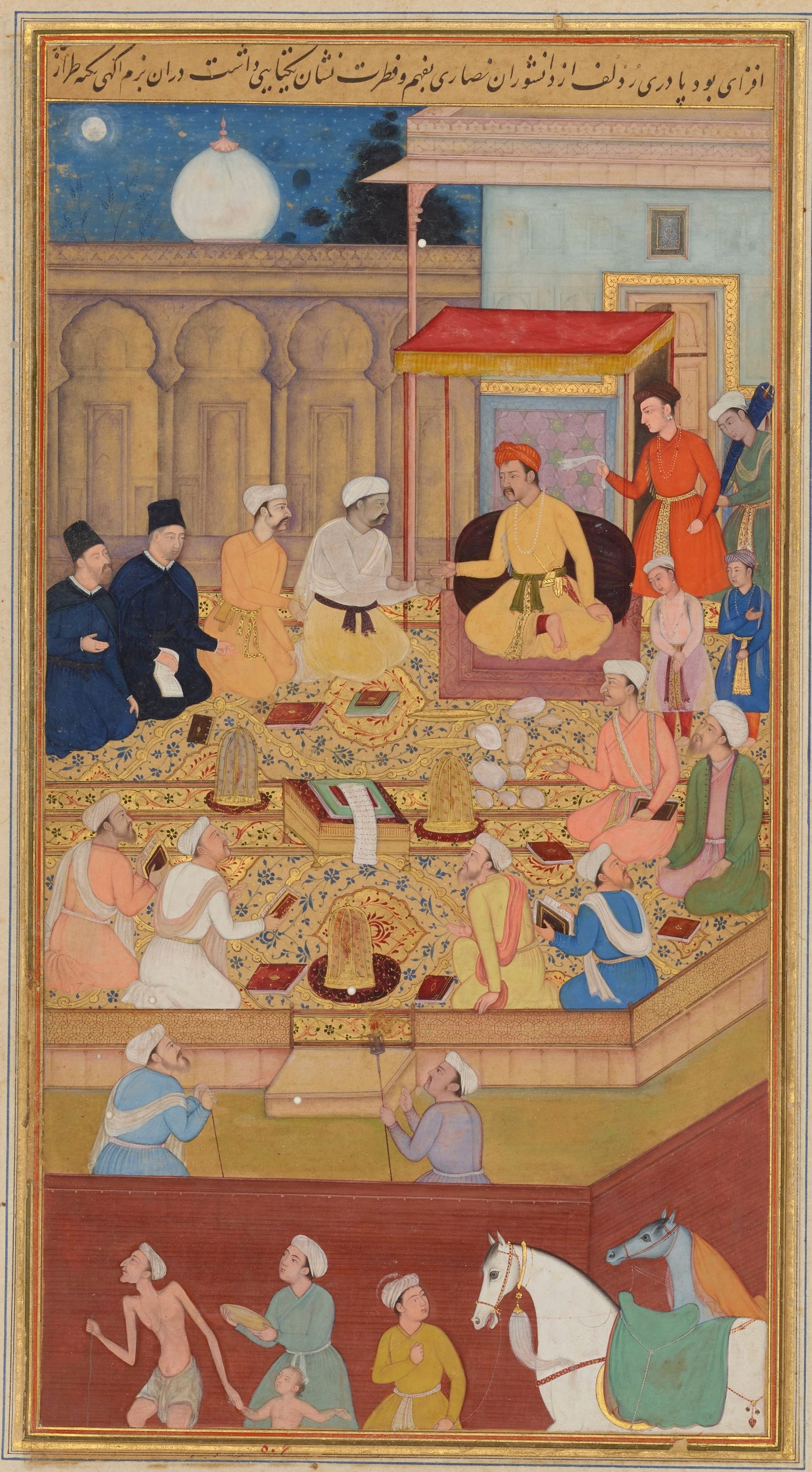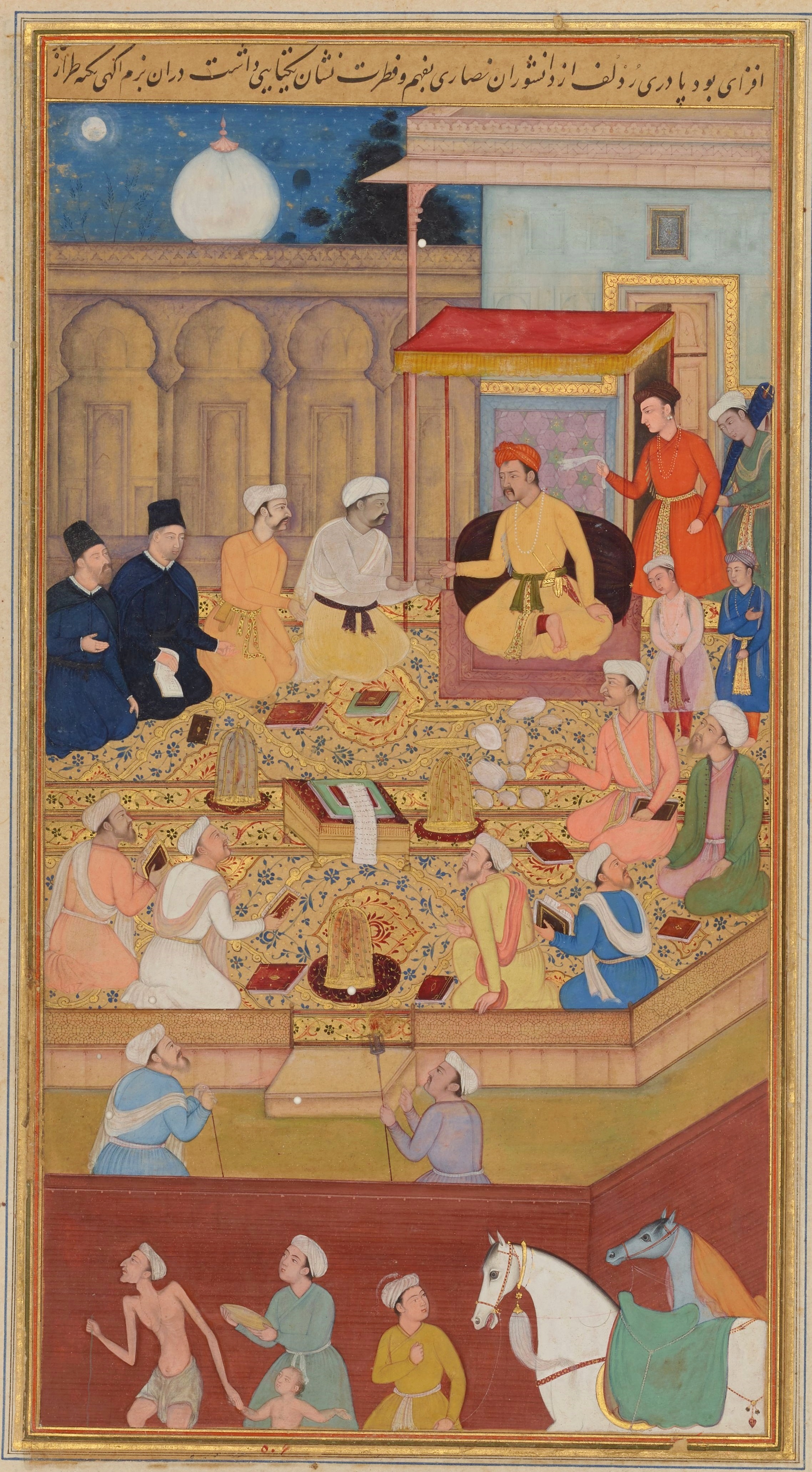If you're looking for calendars for the new year, we offer you DailyArt 2020 wall and desk calendars, which you can check out in our online shop! : )
Although he could not read or write, the Mughal Emperor Akbar was a curious man who delighted in artistic and intellectual pursuits. He was fascinated by religion and established the Ibadat Khana (the house of worship) in Fatehpur Sikri to hold theological discussions. He hosted leaders and scholars of different faiths to discuss their respective teachings. He learned about the origins and practices of Islam, Hinduism, Zoroastrianism, Christianity, and so on, and participated in their religious festivals. Under Akbar's patronage, schools were established for both Hindus and Muslims, churches were constructed, the four Gospels of the New Testament and various Sanskrit texts were translated into Persian, and the slaughter of cattle was discouraged to respect Hindu sentiments.
The Infallibility Decree of 1579 deemed Akbar as Mujtahid, the supreme or final interpreter of religious law. This superseded the authority of the mullahs or Islamic clerics and many decried it as heresy. Shortly thereafter, Akbar established his own religion known as Din-e-Ilahi (“the faith of the divine”), which combined elements of Hinduism and Islam. The purpose of Din-e-Ilahi was to unite his religiously diverse population, although it did not procure many converts, nor did it survive Akbar's death in 1605.
This artwork is an illustration from the Akbarnama, Akbar's biography by one of his valued courtiers, Abu'l-Fazl ibn Mubarak. It was created by Nar Singh, a Hindu court painter in Akbar's employ who created many such genre paintings in the distinctive Mughal style. It features the Italian Jesuit missionary, Rodolfo Acquaviva, and his Persian translator, Francisco Henriques, in the Ibadat khana of Fatehpur Sikri. It is believed that Acquaviva misinterpreted Akbar’s curiosity and enthusiasm in his teachings to be an interest in conversion to Catholicism.
- Maya Tola
P.S. Read more about the artistic patronage of Akbar the Great here!


 Nar Singh
Nar Singh